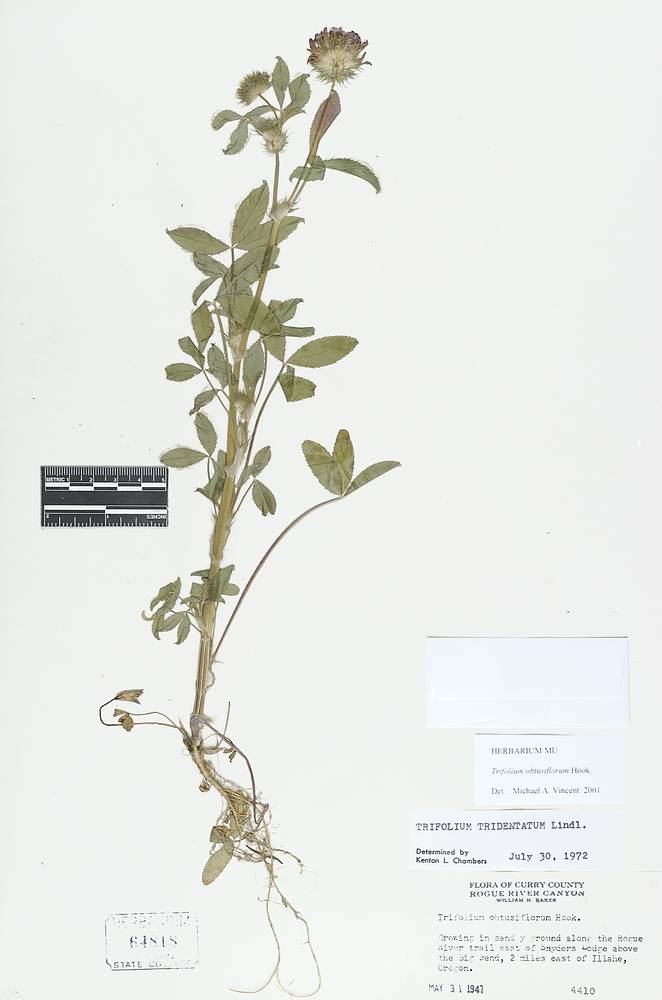
Plants annual, erect or ascending, 2–100 cm, resinous stipitate-glandular; branched.
Leaves palmate; leaflets 3, elliptic, lanceolate, oblanceolate, rhombic, or obovate, 15–40 × 3–17 mm, bases cuneate, margins coarsely spinulose-serrate, veins thickened, tips acute, mucronate, surfaces glandular; petioles 15–100 mm; petiolules ? 0.5 mm; stipules ovate, 10–15 mm, sheathing, margins deeply lacerate, tips acuminate.
Inflorescences axillary or terminal, 10–50-flowered, globose or ovoid, 10–35 × 10–30 mm; involucres flattened or bowl-shaped, divided ¼–? their length, when flattened laterally not hiding flowers except proximally, 3–8 mm, deeply lacerate; bracteoles absent.
Peduncles 30–150 mm, glandular.
Pedicels erect, ~1 mm.
Flowers 13–20 mm; calyces tubular-campanulate, slit between adaxial lobes, 10–13 mm, glandular, veins 20+, tubes 5–7 mm, lobes narrowly triangular or lanceolate-subulate, unequal, ? tube, usually entire, rarely 3-fid or shouldered, orifices open; corollas 10–18 mm, white or pale pinkish with dark purple spot, banners broadly elliptic, 10–18 × 2–4 mm, tips blunt.
Fruits obovoid, 3.5–4 mm.
Seeds 1–2, ellipsoid or mitten-shaped, 2.5 mm, brown, mottled, smooth.
2n=16.
Moist swales, creek bottoms. Flowering May–Jun. 0–100 m. Est, Sisk. CA; south to Mexico. Native.
Trifolium obtusiflorum is much less common than the similar T. willdenovii, occurring in moist areas in cismontane California and north into Oregon (Jepson 1925). It is easy to distinguish from T. willdenovii by its glandularity, which in fresh specimens causes them to be sticky to the touch.